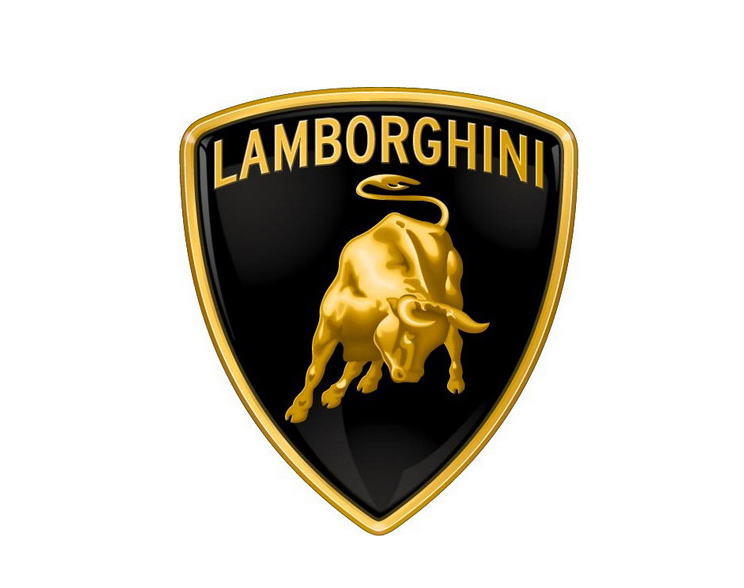
The history of Lamborghini
Founder Ferruccio Lamborghini was born into a family of grape farmers, but it soon became clear that he was much more interested in mechanics and vehicles than in growing crops. After a stint in the Italian Royal Air Force during World War II, he melded his passion with that of his family business and began building tractors for working the fields.
Lamborghini’s innovations were a great success and he was soon rich enough to afford the pinnacle of automotive engineering: a Ferrari. But he soon encountered problems with the vehicle, which he wanted to discuss once himself with il Commendatore, Enzo Ferrari.Sometime in 1962, Lamborghini drove to the factory in Maranello and told them that his Ferrari’s clutch was out of order. Ferrari’s response? Somewhere along the lines of: “The car is fine. You just don’t know how to drive it.” Furious, Lamborghini then vowed to make a perfect car, far better than any Ferrari model. A year later, Automobili Lamborghini was founded in Sant’Agata Bolognese. Anything Lamborghini produced would make the automotive world better forever. In this blog, you will learn more about Lamborghini’s history and we will dish out some interesting facts and trivia.
The logo of Lamborghini
Lamborghini’s logo, a bull ready to pounce, has a double meaning. Ferruccio was born on April 28, 1916, which means he has the star sign of the bull. In addition, Ferruccio was a big fan of Spanish bullfighting, which is why Lamborghini’s logo features an attacking bull.
Lamborghini’s debut car
The first Lamborghini prototype was the 350 GTV. The 3.5-liter V-12 coupe was unveiled under the Automobili Ferruccio Lamborghini banner and had a drivetrain designed by the famous Giotto Bizzarrini. The “350” represented the engine, while the “GT” meant it was a grand tourer. The V? That stood for “Veloce,” the Italian word for “fast.” Unfortunately, the debut car was never completed as a driving car because the body panels did not fit around the engine. Lamborghini made its first mass-produced car, the 350 GT, in 1964. A total of 120 examples of this were produced.
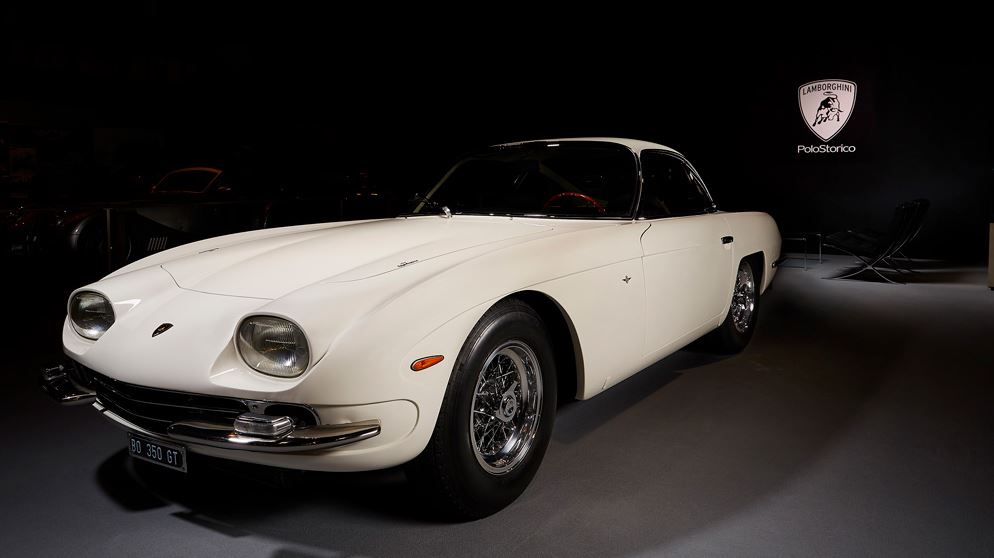
A restored 1964 Lamborghini 350 GT.
The Miura
The Lamborghini brand really got on the map when the Miura debuted at the 1966 Geneva Motor Show. The mid-engined supercar was designed by Bertone and 770 of these were built between 1966 and 1973. Miura, by the way, was the name of a famous Spanish breeder of fighting bulls….
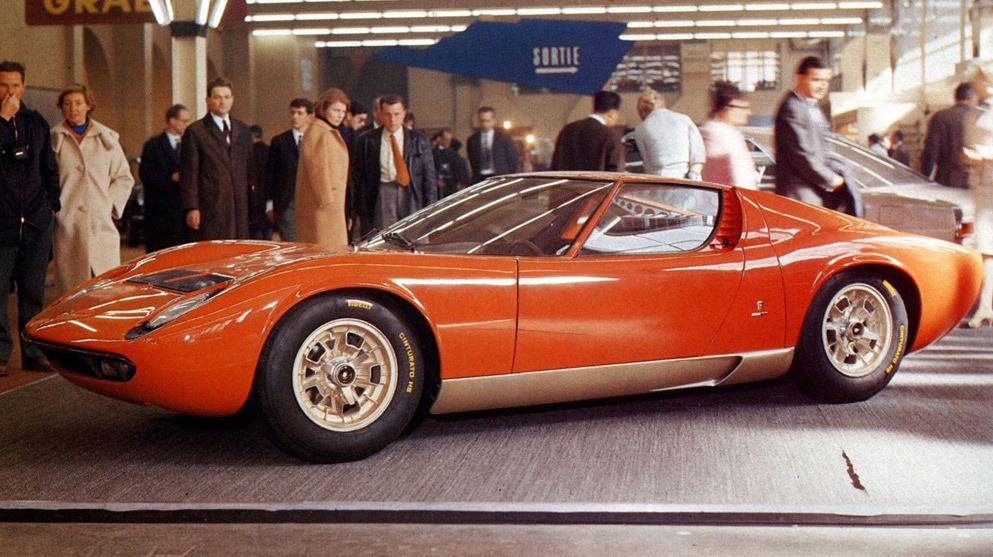
The Lamborghini Miura at the 1966 Geneva Motor Show.
The Urraco
When Miura production ended, the Urraco was created. Urraco translates to “little bull.” The 2+2 sports car was a particularly important model in Lamborghini history. Not only because it was super-powerful and performance-oriented (3.0-liter V8, 247 hp), but even more so because the Urraco launched a line of “more affordable” Lamborghinis. Urraco’s successor was the Silhouette, then came the Jalpa, then the Gallardo and finally the Huracán – a model still sold today.
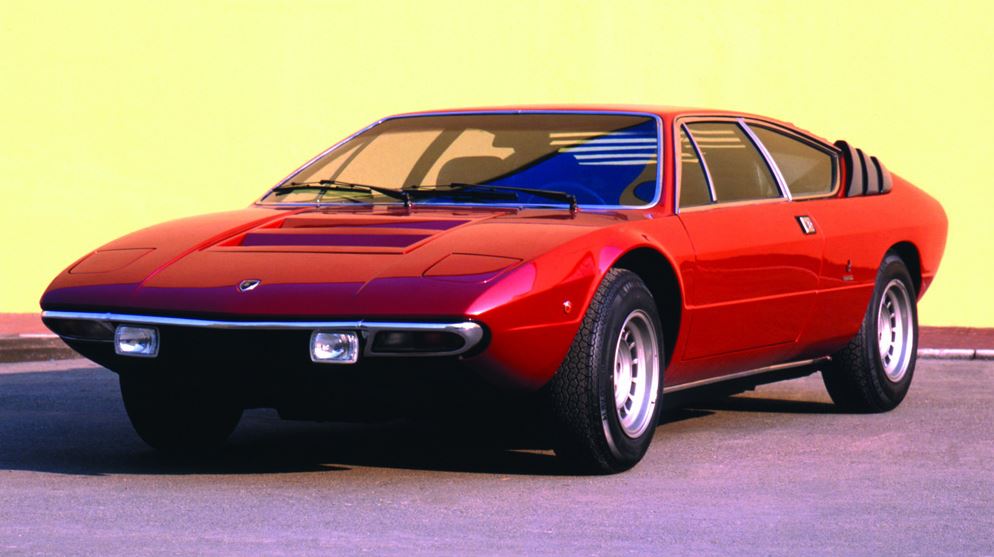
The Lamborghini Urraco.
The success of the Huracán
Lamborghini sold as many copies of the Huracán as the Gallardo, but in only half the time. With the Gallardo, it took ten years for the 14,022nd vehicle to roll off the assembly line in 2013. The same number of Huracáns took less than five years.
The Huracán Evo
In the latest Huracán variant, the Evo, the driver is completely central. The Huracán Evo has an amazing first: Lamborghini Dinamica Veicolo Integrata. This predictive technology taps into the vehicle’s ECU and monitors all aspects of the car’s behavior while measuring all driver input. This helps anticipate the driver’s next move and the car can change the set-up on the fly to ensure perfect dynamic response.
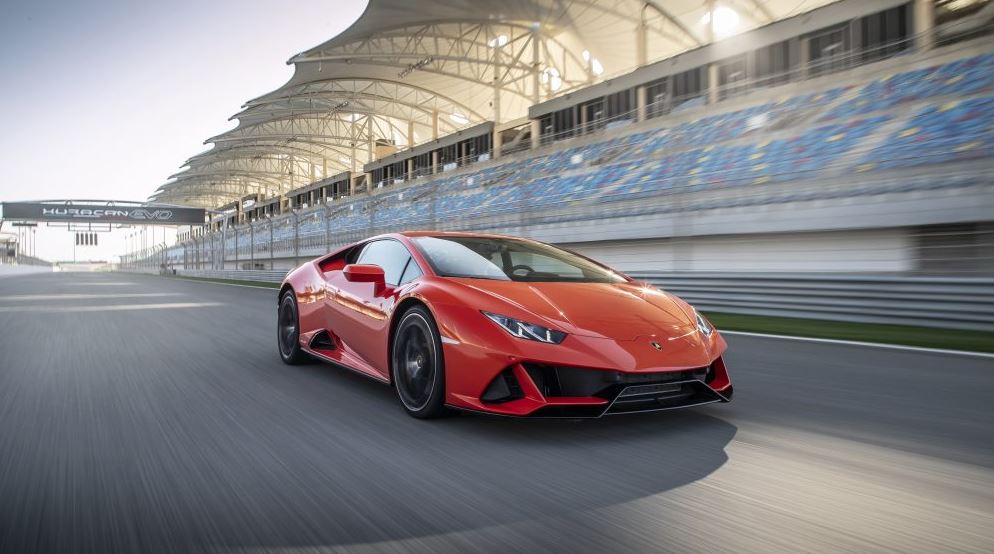
The Lamborghini Huracán Evo (2020).
The Huracán Performante
Then there’s the Huracán Performante. In this model, the 5.2-liter naturally aspirated V-10 generates 631 hp and 443 ft lbs of twist, a nice boost from the 602 hp and 413 ft lbs in the base LP610-4 Huracán. In 2017, the Huracán Performante set a Nürburgring-Nordschleife lap record in 6:52. (For reference, the Porsche 918 Spyder did so in 6:57 and Lamborghini’s own Aventador in 6:59).
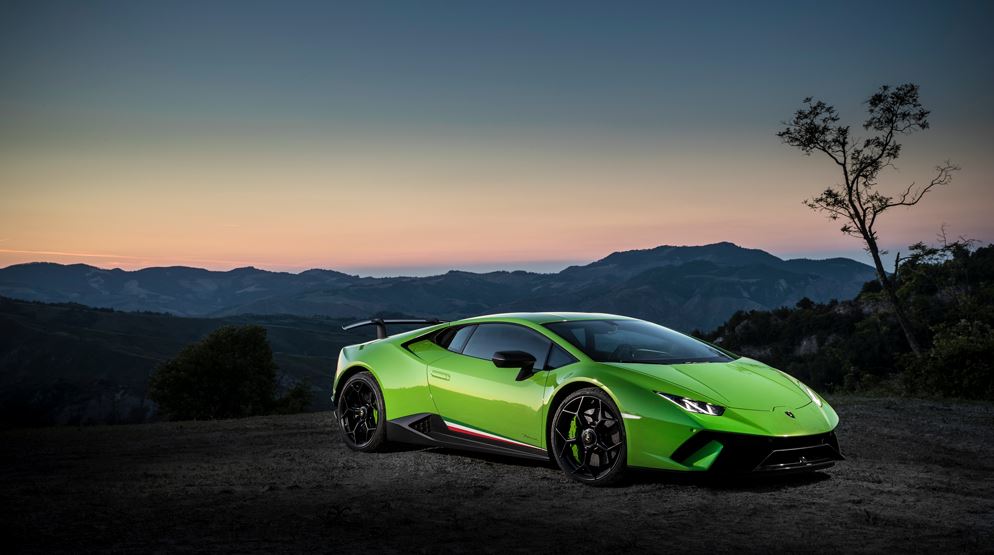
The Huracán Performante.
There is even a Huracán police car
The Italian highway patrol uses a Huracán with police badge and light bar. You can encounter this particular Huracán on the autostradas in and around Bologna and Rome. The vehicle is also used when blood or human organs need to be transported urgently and quickly.
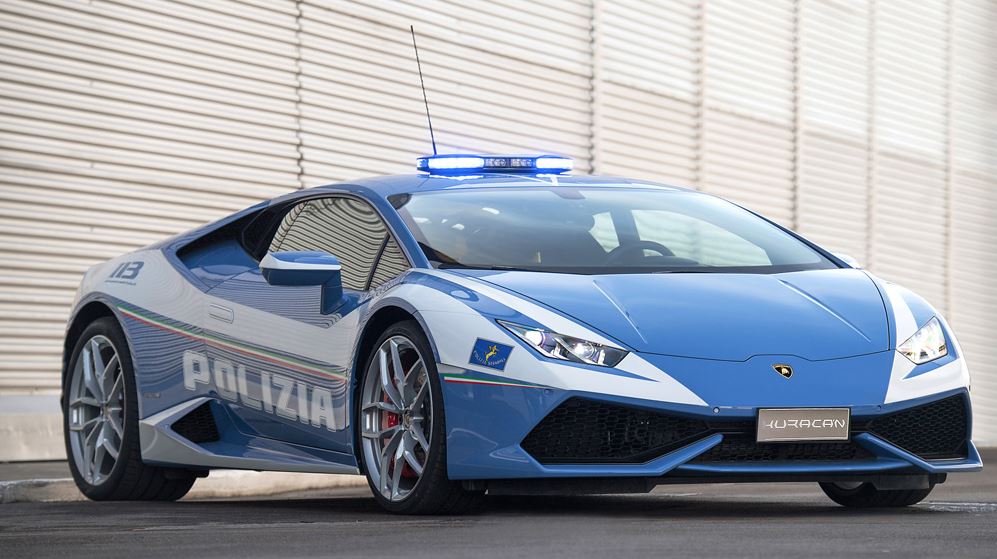
The Huracán “Polizia”.
The Aventador: Lamborghini’s wildest bull
The successor to the Murciélago, the Aventador packs a 6.5-liter V-12 that wakes up even the dead. With its 690 horsepower and 509 ft lbs of torque, the Aventador sits at 100 km/h in just 2.9 seconds. When you get into the Aventador SVJ, everything becomes even more insane. The letters SVJ stand for “Super Veloce Jota,” or Super Fast Race Car, as Jota refers to a racing class in the FIA’s Appendix J. Porsche’s 911 GT2 RS was beaten on the Nürburgring-Nordschleife with a crushing 6:44 lap time, a record that still stands today.
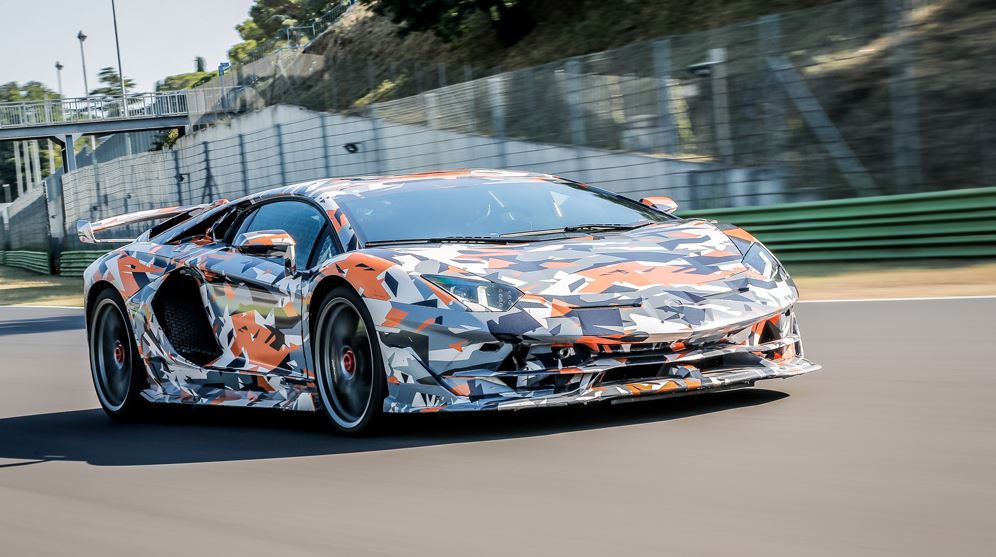
The record-breaking Lamborghini Aventador.
Lamborghini’s best-seller is an SUV
With a versatile chassis and adjustable suspension, the Urus can handle everything from snow to sand or even a full-blown race track. It debuted in 2017 and was an instant success. In 2019, the first year the Urus was fully available on the market, Lamborghini’s SUV sold nearly 5,000 units, increasing the brand’s total sales worldwide by 43 percent over the previous year. Under the hood is a modified version of Audi’s 4.0-liter twin-turbo V8 tuned to produce 641 horsepower for the Urus.
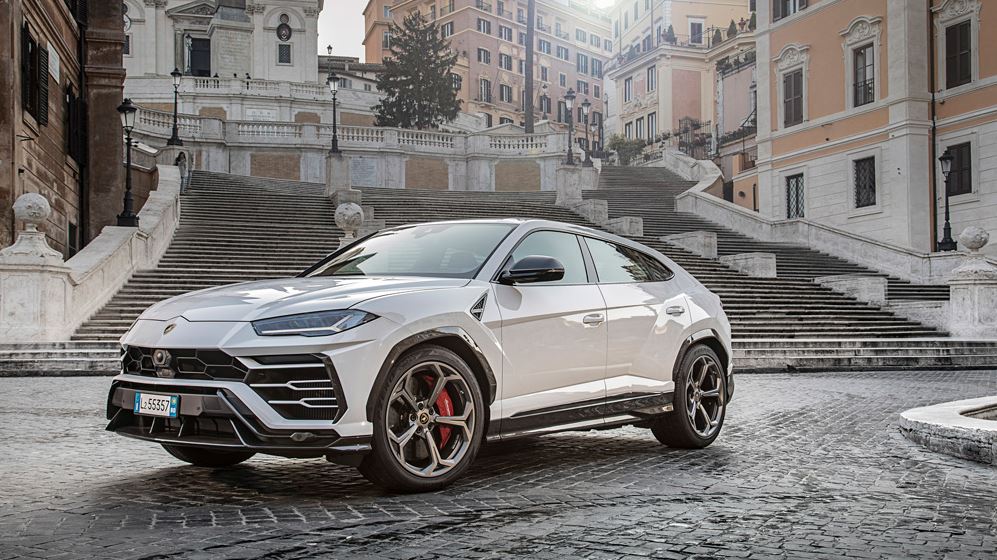
The Lamborghini Urus in Rome.
Renting a Lamborghini?
Have you always had the dream of driving a Lamborghini yourself? At PassionWithoutLimits you can rent a unique Lamborghini Aventador Roadster. With this amazing hypercar you will steal the show at your wedding or simply make a beautiful tour. Please contact us for the possibilities.
